Basin Pond continues to surprise and delight us in all seasons. Here are a few photos from the weeks leading up to the summer solstice.
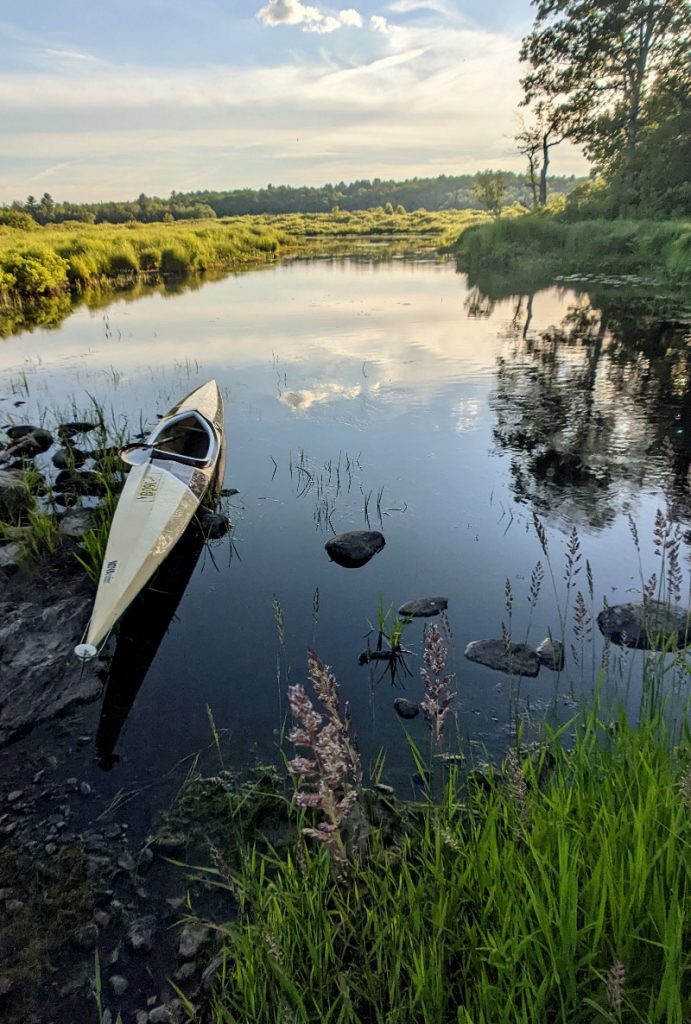
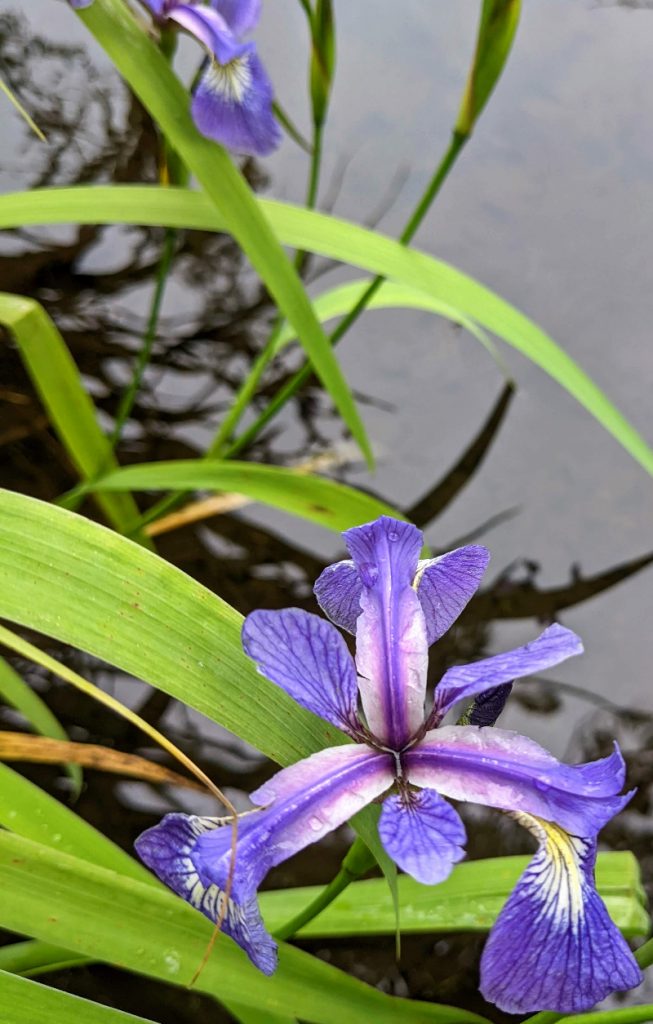
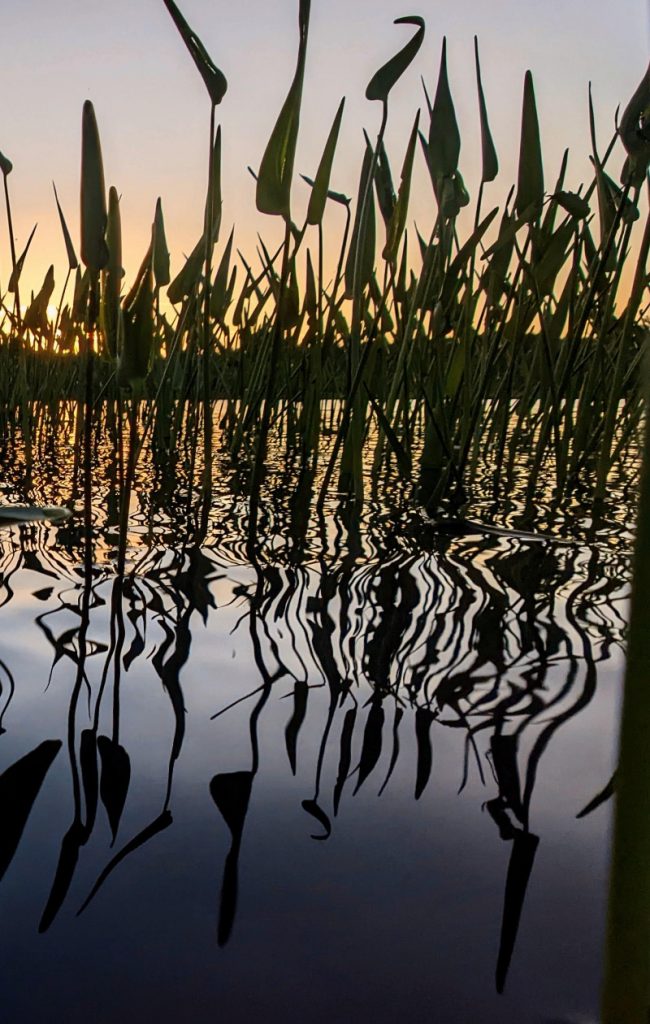
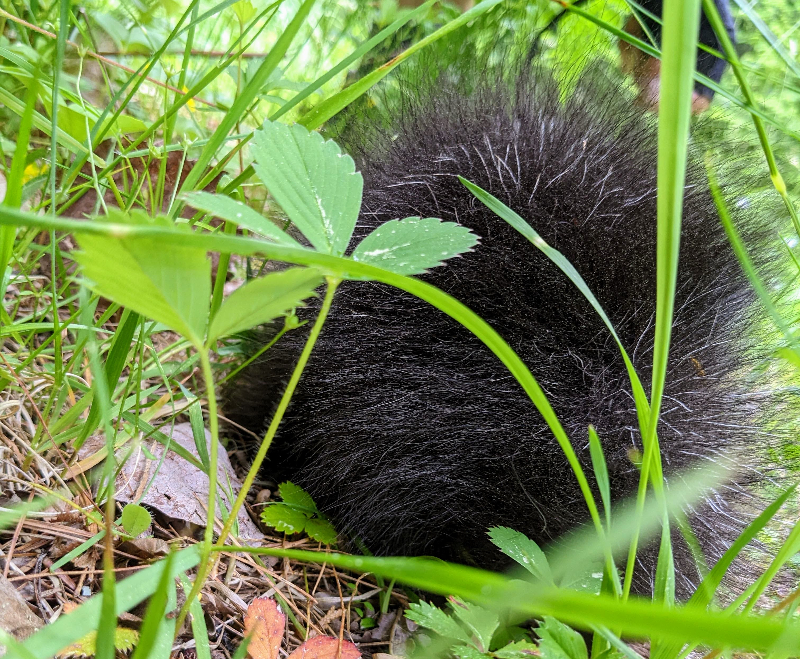
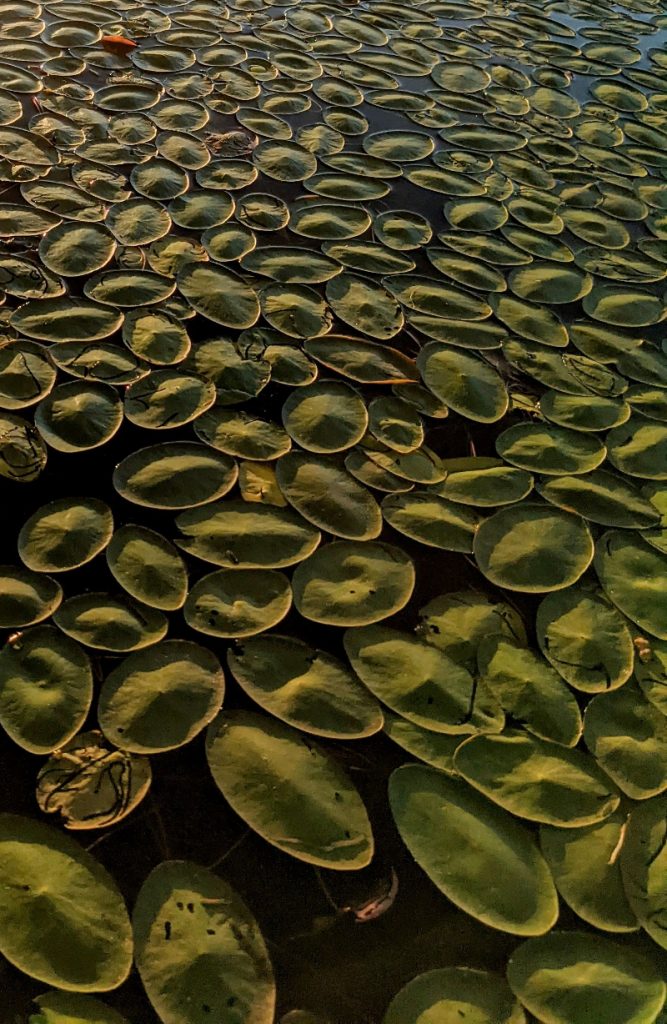
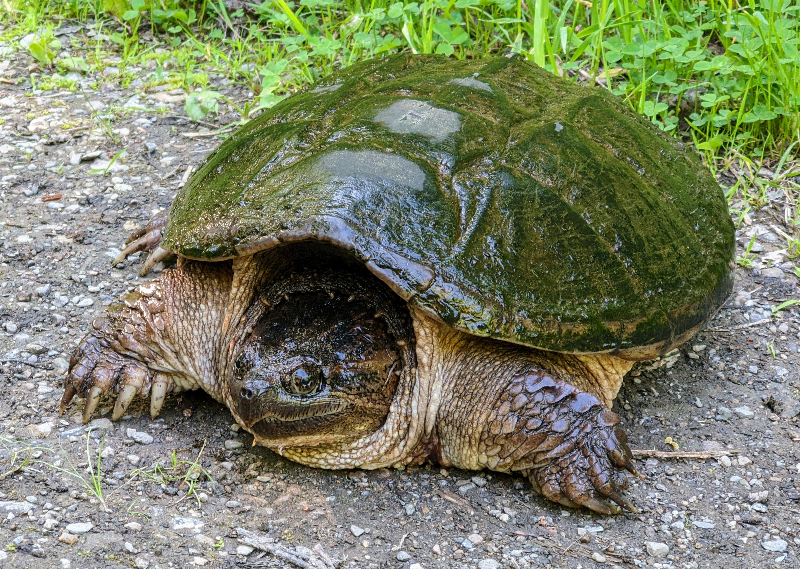
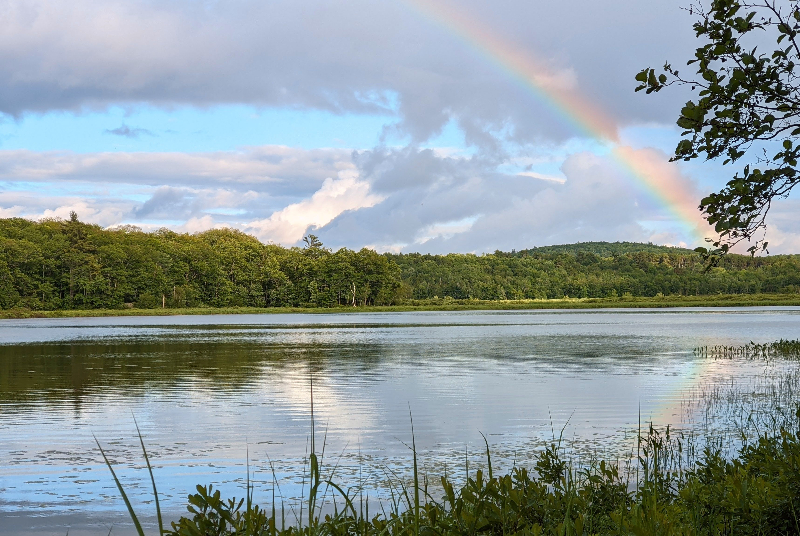
In early spring, as the snow melts and the earth thaws, the hearts of tiny frogs and salamanders who have lain in the earth over the winter also thaw and start beating. As these creatures warm up and start moving, they begin to pilgrimage toward the small seasonal pools where they themselves hatched in a previous spring.
Like a tent city that is transformed from an empty lot to a bustling metropolis within the course of a couple of weeks, a vernal pool rapidly morphs from a seemingly lifeless pond to a “grand central station” of the spring forest. Another name for vernal pools is “ephemeral pools” — so called because they are transitory and temporary.
As I learn more about vernal pools, I am struck by the fact that the lives of so many forest creatures intersect there and that they are so critical to the survival of so many species.
Maybe you’ve heard of upwellings in the ocean, places where cold nutrient rich water rises to the surface and — once mixed with sunlight –becomes a catalyst for an explosive growth of phytoplankton. The phytoplankton in turn supports a profusion of marine life including fish and sea birds.
Vernal pools and the creatures that inhabit them are the upwellings of the forest. The flow of nutrients they receive is in the form of the frogs and salamanders that return to them each spring in order to mate and lay eggs. These amphibians and their offspring are, in turn, food for a wide variety of forest creatures including turtles, snakes, ducks, herons, foxes, skunks, and raccoons. Like upwellings in the ocean but on a much smaller scale, vernal pools are nutrient powerhouses of the local food web.
Species that commonly inhabit Maine’s vernal pools include wood frogs, spotted salamanders, and fairy shrimp. For these creatures, the fact that vernal pools are by definition temporary is a deal-maker. In fact, without vernal pools, these creatures cannot successfully reproduce. The reason for this is that their eggs are gobbled up by fish, if fish are present. So a key to the survival of these creatures is laying their eggs in waters that do not have fish. Pretty smart, huh?
While frogs and salamanders are amphibious and can simply hop or crawl away from the vernal pool by the time it dries up in summer, fairy shrimp have no such option. Their solution is to have a short life span — and to lay hardy eggs that can survive heat, cold, and dry conditions until the pool fills up the next spring. How do fairy shrimp populations come to inhabit a pool far from others and high up on a hillside, one might ask? Turns out that the same ducks that feed on the adult shrimp inadvertently transfer shrimp eggs from one pool to another via their webbed feet.
Want to see some vernal pools yourself? In this part of Maine, May is the perfect time of year to check for egg masses of frogs and salamanders. The town land at Basin Pond has five vernal pools that can be accessed off the Basin Pond Trail system. Hiking the trails and visiting the pools can be done in just a couple of hours and makes a great family trip. Maps and additional resources are below.
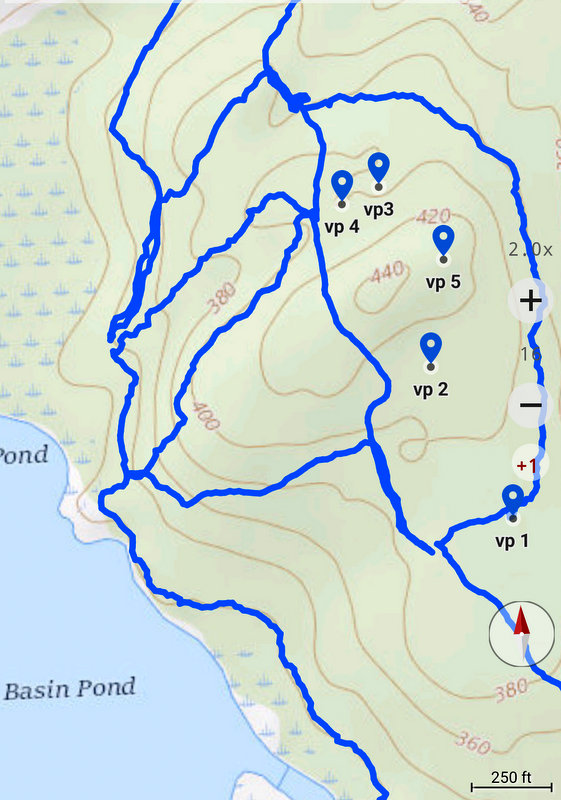
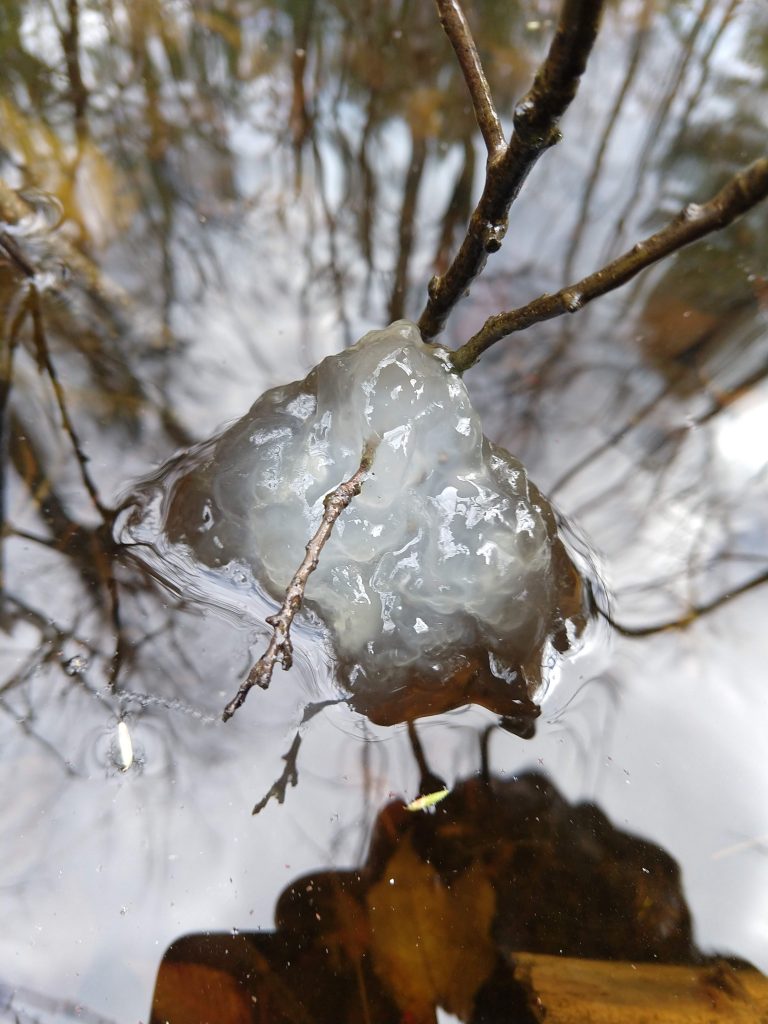
GPS Coordinates to Vernal Pools at Basin Pond in WGS84 Format
VP #1: 44.590083 degrees N, -69.066909 degrees W
VP #2: 44.591411 degrees N, -69.067816 degrees W
VP #3: 44.59297 degrees N, -69.068345 degrees W
VP #4: 44.592836 degrees N, -69.068796 degrees W
VP #5: 44.592325 degrees N, -69.067605 degrees W
———————————————————
Resources:
Basin Pond Trails — Printable Map (pdf format)
Fact Sheet: Vernal Pools (Maine DEP)
Significant Vernal Pool Habitat (Maine DEP)
The National Wildlife Federation: Wood Frog
Forest Ephemera: Vernal Pools
–Hearty thanks to Don Phillips of Phillips EcoServices for initially identifying and mapping these five vernal pools on the Monroe town land near Basin Pond.
As we’ve been skiing and snowshoeing these last few weeks, we’ve been able to see solid evidence of deer: deer tracks! We’ve seen enough deer year round and plenty of droppings and certainly heard the gunshots in November, but tracks in the snow show us how close the deer have come, how many there are, and some of their trails.
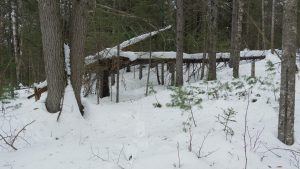
As the snow gets deeper, it turns out the deer like our trails!
Not knowing which way to go, I follow the deer trail.
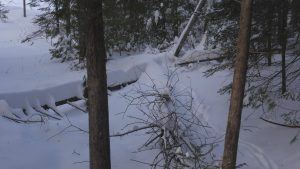
And after persisting on this trail
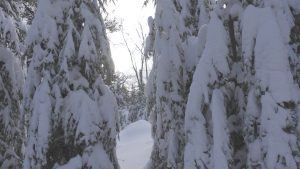
I came out into this opening and bedding area.
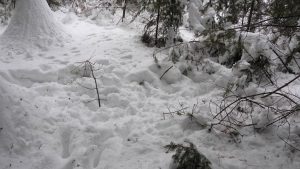
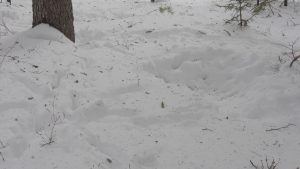
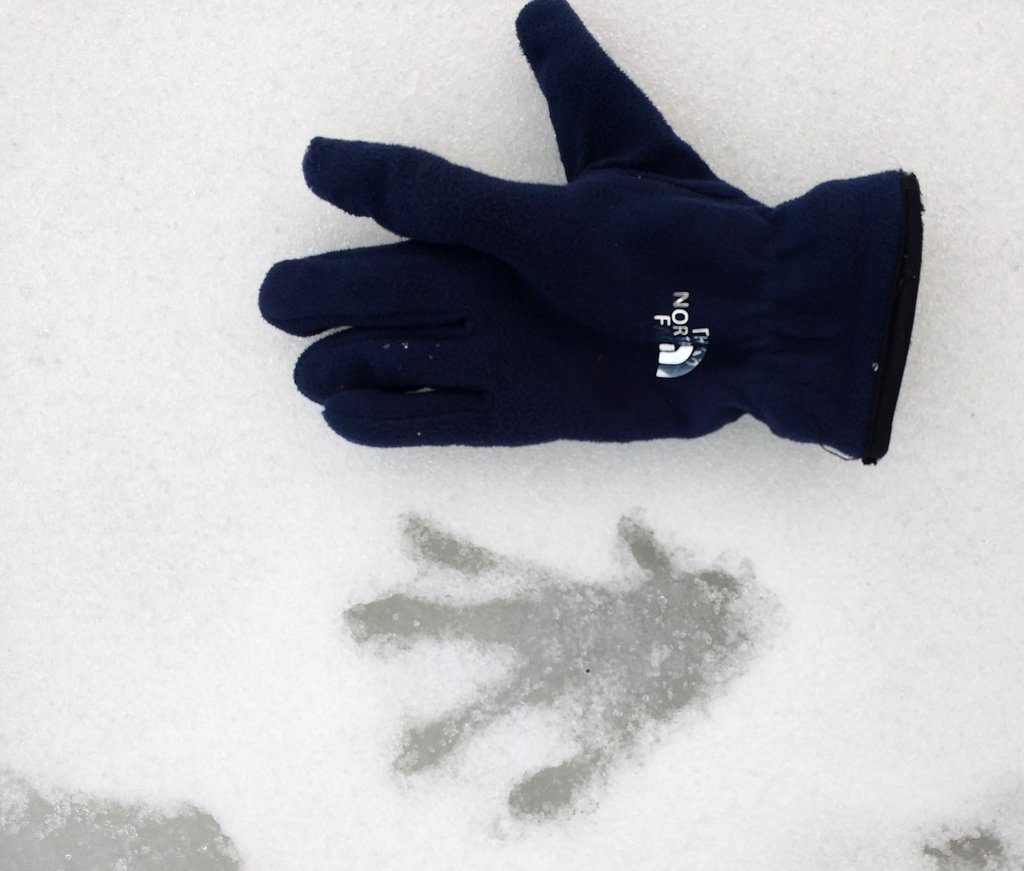
Big enough to aggressively slap its tail on our approach, rather than quietly slipping out of the way. Big enough to cut down and transport trees as much as 30 inches in diameter. Big enough to build dams more than 12 feet high.
According to LiveScience, the typical American beaver (Castor canadensis) weighs 60 pounds and is 23 to 39 inches (60 to 100 centimeters) long. The tail adds another 7.75 to 12 inches (20 to 30.5 cm) to its length,
A beaver is big enough to change an entire landscape. It is big enough to want to defend its territory against humans. It is big enough to be North America’s largest rodent.
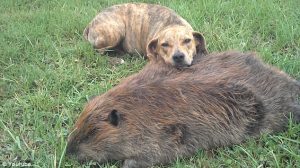
Coming off the water
Deep into dusk,
We turn to watch
Ten geese plummet to Basin Pond,
Wind ruffling under their wings,
Lured by the swimming moon.